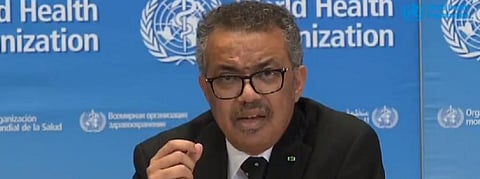

The future of the novel coronavirus disease (COVID-19) pandemic was dependent on the response of India, a highly and densely-populated country, the World Health Organization (WHO) said on March 23, 2020.
The trajectory of the virus would be determined by how aggressive and sustained the action of highly populous countries like India was in dealing with the outbreak, Mike Ryan, WHO emergencies programme director, said in a press conference at the organisation’s headquarters in Geneva, Switzerland.
“India led the world in killing two silent but very big killers — smallpox and polio — and gave a great gift to the world. It has tremendous capacities,” Ryan said. He added these two diseases could be eliminated due to robust surveillance networks which now needed to be employed in finding suspected COVID-19 patients.
The WHO panel maintained that aggressive case finding by ramping up testing was a key weapon. If India, or any country was falling short of testing kits, then they had to adopt the WHO guidelines on how to prioritise testing according to the foreseeable future.
Testing has been a grey area for India as it has only tested a little over 18,000 samples when many other are testing several thousands per week. Indian Council of Medical Research Director General Balarama Bhargava has said on a number of occasions that India does not believe in indiscriminate testing.
Ryan stressed that aggressive testing did not mean indiscriminate testing. “No, we are not saying everybody should be tested. But we say patients even with pneumonia (who do not necessarily have symptoms) should be, along with those who have a history of international travel or contacts,” Ryan said.
Shutdown is no future
If the kits are scarce, WHO officials said they had guidelines on how to prioritise testing and tailor guidance to countries depending upon the stage of transmission. “Every country should see how to increase production of testing kits so that we can fight the virus without being blindfolded,” Maria Van Kerkhove, technical lead, WHO, said.
India's entered into total shutdown on March 23 with 30 states comprising 548 districts going under complete lockdown. The states of Uttar Pradesh, Madhya Pradesh and Odisha will have partial lockdown in a total of 58 districts. Sikkim and Mizoram remain the only two states who have not yet issued any such order.
A few other countries have also severely restricted peoples’ movements. “Restricting movement or asking people to stay at home will only dampen down the intensity of the epidemic. But if we have to work out of this epidemic, we have to scale up case identification and ensure isolation for positive cases. Testing is important now. But it will become even more important in the coming weeks,” Ryan said.
How long can countries lock down their people? The WHO officials said it was an exercise difficult to sustain.
“Shutting down can only take the heat out of pandemic. We have seen that in Ebola and polio outbreaks. Countries have to step up and go against the virus. Singapore and South Korea did this. The governments did not have to shut everything. Tactical decisions regarding schools and movement of people were taken. These countries have been able to move forward without some of the draconian measures. And they have been able to do that with the other weapon, that is case finding,” Ryan said.
The WHO’s message was that shutdowns were a ‘second window of opportunity to contain the virus’ but public health tool kits had to match those restrictive measures.